UCV Civil War Military Operations Marker #11: Leetown and Kearnerysville, August 25, 1864
Introduction
Text-to-speech Audio
Images
Obelisk #11
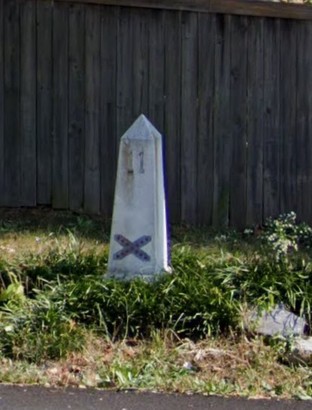
Jedediah Hotchkiss' map of the August 25, 1864 engagement. Serving with the Confederate Army the entire war, Hotchkiss is the most famous cartographer of the Civil War.
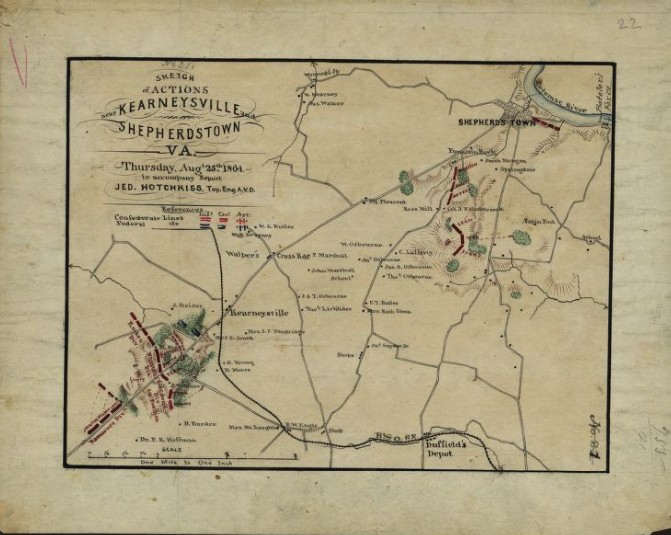
Jedediah Hotchkiss' map of the August 25, 1864 engagement, part B.
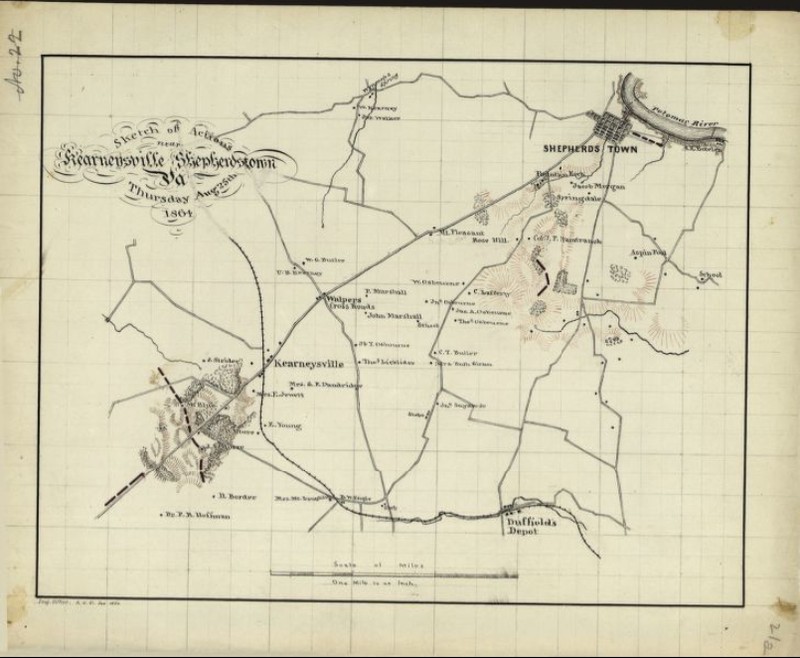
Confederate General Jubal A. Early
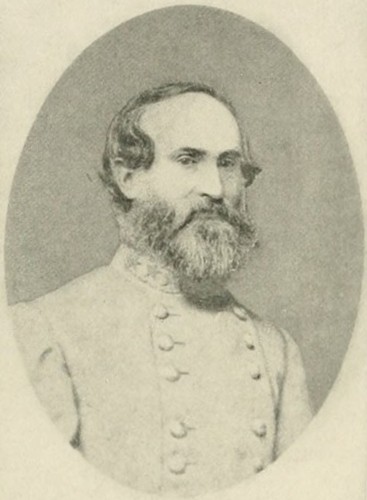
Union Major General Wesley Merritt
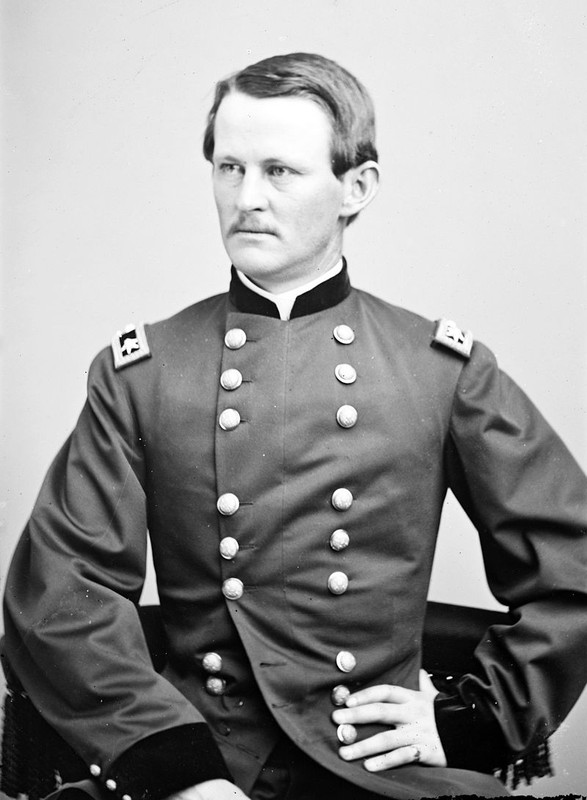
Union Major General James H. Wilson
.jpg)
Confederate Brigadier General John B. Gordon was wounded above the eye in the engagement of August 25, 1864--this was mentioned specifically in the UCV account.
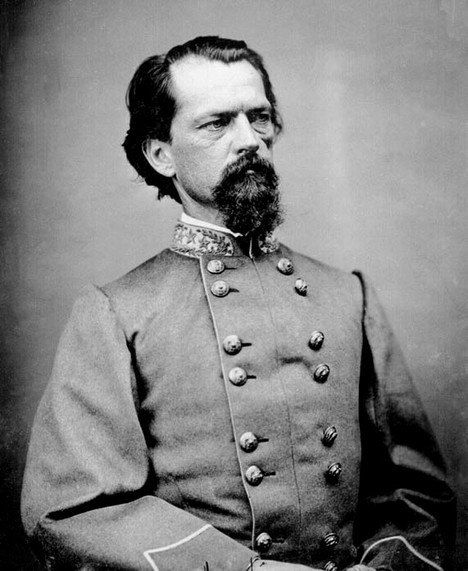
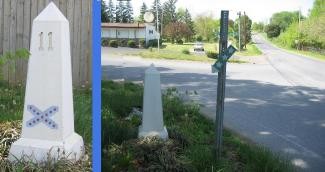
Backstory and Context
Text-to-speech Audio
After the Battle of Summit Point on August 21, 1864, Union General Philip Sheridan’s troops were at Halltown and Confederate General Jubal Early’s settled outside of Charles Town. In the next days Early tested Sheridan’s defenses at Halltown and decided to move towards Shepherdstown. Early left General Anderson’s force at Charles Town on August 25th and took the rest of his men towards Shepherdstown, meeting Union resistance along the way. First Early encountered cavalry under Wilson and Merritt and after a skirmish the Union cavalry retreated towards Shepherdstown while Early continued to Kearneysville. At Kearneysville, Early’s force met another Union resistance but was able to force the Union troops to retreat towards Halltown. The Confederates made it to Shepherdstown on the evening of August 25 and during the night the rest of the Federal force in that city retreated across the Potomac at Pack Horse Ford. Because the Union troops at Shepherdstown retreated, Early decided not to stay there and to return to their camp at Bunker Hill.
Context: Engagements August 21-29, 1864
In 1864 newly appointed General in Chief Ulysses S. Grant pursued a new strategy of pressuring the Confederate ability to wage war. His plan had Union armies move against Confederate forces in unison to prevent the Confederacy from moving their resources to fill in weak points in their defenses. This grand strategy included the Overland Campaign of Meade’s Army of the Potomac against Richmond, VA and Sherman’s march through Georgia and the Carolinas, as well as other supporting campaigns. The Shenandoah Valley was a crucial supply region for the Confederacy, particularly for Lee’s Army of Northern Virginia and Grant intended to interrupt that supply line by threatening the railroads in western Virginia and hopefully forcing Lee to send troops to counter the Union in the Valley, thus weakening his force engaged against Grant and Meade near Richmond. The 1864 Valley Campaign began in the spring, at the same time that the Army of the Potomac began to move south to the Wilderness and beyond towards Richmond.
Three of the obelisks erected by the Jefferson County Camp of United Confederate Veterans in 1910 commemorate a set of engagements in August 1864. Near the beginning of August, General Philip Sheridan assumed command in the Shenandoah Valley. The previous month Confederates under General Jubal Early threatened Washington D. C. and won the Battle of Monocacy, another force freed prisoners from Point Lookout and burned Chambersburg, and both sides engaged in acts of retaliation in the Valley against civilian homes. Returning to the Valley, Early had a force of less than 20,000 men organized into five infantry divisions and Sheridan reorganized the Department of West Virginia to meet the threat. The Army of West Virginia was redesignated the 8th Corps and Sheridan was assigned additional troops from General Horatio Wright’s 6th Corps, two divisions of the 19th Corps (Major General William H. Emory), and two divisions of cavalry from the Army of the Potomac. This was Sheridan’s Army of the Shenandoah and the General departed Harpers Ferry of August 10 towards Berryville, VA with a force of 18,000 infantry and 3,500 cavalry. General Grant trusted Sheridan with taking care of Early in the Valley to prevent further attacks towards Washington and pursuing Grant’s original goal of cutting of supply lines. After August 10, Sheridan took his force south to engage with Early and Early responded by pulling back to Cedar Creek. A day or so later Early pushed back and Sheridan retreated; he was given incorrect intelligence that General Longstreet’s Corps was in the area and Sheridan did not want to risk a major defeat during Grant’s campaign and the presidential election.
Sheridan returned to West Virginia and his troops engaged with those of Early in Jefferson County at the end of August, the events marked by the UCV obelisks. On August 21 General Early ordered his force to advance towards Charles Town: General Richard H. Anderson was to move through Summit Point towards Charles Town, Early’s main force moved from Bunker Hill through Smithfield, and General Fitzhugh Lee’s cavalry advanced along the Berryville Pike. Sheridan’s force was encamped near Cameron’s Depot, just west of Charles Town. Union cavalry under Brigadier Generals James H. Wilson and Wesley Merritt delayed the force under Anderson and Lee’s cavalry, so the main force under Early arrived first. Advancing from the direction of Middleway, Early’s troops surprised Union pickets from the 6th Corps at Welch’s Spring and then set up artillery near Richwood Hall. Sheridan countered with artillery at Locust Hill. At the beginning of the battle of Cameron’s Depot the Confederates were able to put pressure on the Union position and force them off the ground by Locust Hill. Around noon, the First Division of the Union 19th Corps connected with Sheridan’s right flank and successfully fought the Confederates there, but after dark Sheridan decided to pull back to Halltown. As Sheridan’s force retreated, Early’s advanced and threatened Charles Town.
While Early and Sheridan’s main forces fought at the battle of Cameron’s Depot, there was an additional engagement just to the north on the Leetown Road. Confederate reinforcements under Major Generals Robert E. Rhodes and Stephen D. Ramseur took position on Early’s left and cavalry under Major Lunsford L. Lomax was tasked to guard the Confederate’s left flank. Lomax ordered Harry Gilmor to protect the flank and Leetown Road with two Maryland battalions and the 19th and 20th Virginia of the Stonewall Brigade. Some of Gilmor’s men had dismounted near the home of a Mrs. Daniel, a Confederate sympathizer, when they were surprised by the 12th Pennsylvania Cavalry and Duffie’s Brigade. After the initial surprise, Gilmor’s men were able to regroup and counter the 12th PA’s attempts to flank the Confederate force. Eventually the Union troops fell back behind their artillery which started to fire into the woods where Gilmor’s men were fleeing the open field. Thinking their enemy in retreat, the Union men charged but met the rest of the full Confederate force and were forced to retreat.
***At the end of the day on August 21, Sheridan’s troops were at Halltown and Early’s settled outside of Charles Town. In the next days Early tested Sheridan’s defenses at Halltown and decided to move towards Shepherdstown. Early left General Anderson’s force at Charles Town on August 25th and took the rest of his men towards Shepherdstown, meeting Union resistance along the way. First Early encountered cavalry under Wilson and Merritt and after a skirmish the Union cavalry retreated towards Shepherdstown while Early continued to Kearneysville. At Kearneysville, Early’s force met another Union resistance but was able to force the Union troops to retreat towards Halltown. The Confederates made it to Shepherdstown on the evening of August 25 and during the night the rest of the Federal force in that city retreated across the Potomac at Pack Horse Ford. Because the Union troops at Shepherdstown retreated, Early decided not to stay there and to return to their camp at Bunker Hill.***
Returning to Bunker Hill, Early left cavalry under Fitz Hugh Lee and Lunsford L. Lomax at Shepherdstown and Anderson still guarded Charles Town. On August 26 Sheridan’s force at Halltown took advantage of Anderson’s diminished numbers and attacked with two infantry divisions (Major General George Crook) and a cavalry brigade (Brigadier General Russell Lowell). This attack forced Anderson from his earthworks outside of Charles Town into the town proper. Ultimately, Crook forced Anderson out of Charles Town towards Early at Bunker Hill; Anderson stopped at Stephenson’s Depot near Middleway. Sheridan needed to regain control of the entire area so on August 28 he ordered Merritt’s cavalry to remove the Confederate cavalry from Shepherdstown. Merritt’s men successfully forced the cavalry under Lee and Lomax to retreat towards Middleway. At Leetown, Lomax ordered Harry Gilmor to defend the road, but the Union quickly forced his men to retreat and the Federals were able to retake control of Middleway. One August 29, Early attempted to retake Middleway by sending Major Generals Ramseur and Gordan towards the Opequon Creek. Initially the Confederate force was able to dislodge the Union from Middleway; however, Sheridan needed to prevent Early from advancing again on Charles Town and in the afternoon the Union force was able to retake Middleway and force Early from the county. This allowed Sheridan to expand his force through Jefferson County to control the area and force a buffer against Early. After these engagements, the 1864 Valley Campaign moved back into Virginia.
About the Monuments:
This series of monuments and accompanying tour pamphlet were part of an initiative from the Jefferson County Camp, United Confederate Veterans to commemorate the 50th anniversary of the Civil War. In 1910 Col. R. Preston Chew and the Jefferson County UCV raised the funds to place 25 concrete obelisks in Jefferson County to mark locations of engagement or other significant events. The following year the Camp published a pamphlet to accompany the obelisks and give more information about each location. This was Military Operations in Jefferson County, Virginia (Now West Virginia), 1861-1865 published in 1911. The pamphlet has been reprinted several times by the Henry Kyd Douglas Camp, No. 199 of the Sons of Confederate Veterans. Because the monuments and accompanying pamphlet were done by Confederate veterans it is likely that the locations and descriptions are biased towards or favor the Confederate view and experience of the war.
Original Text from the 1911 Pamphlet:
"Marker Number Eleven
Fighting at Wageley’s Shop And In Woods Near Leetown
General Early, leaving Anderson in front of Charles Town marched on the 25th of August 1864 towards Leetown, intending to go to Shepherdstown. Wharton’s division was in front and encountered a small force of cavalry near Wageley’s Shop, which was quickly disposed of with a loss to the enemy of both men and horses. Marching by way of Leetown he encountered unexpectantly two division of Federal cavalry, Wilson’s and Merrits, which were started on a reconnoisance (sic) up the valley, and had halted in a piece of woods a short distance from Leetown to feed and rest.
The enemy at first gained some advantage but Early quickly formed a line of battle, and advancing boldly, forced the enemy back. Early was not, however, met with any serious opposition until he reached Kearneysville, where the enemy made a determined stand, a part of their force fighting on foot and some mounted. Being unable to dislodge the enemy from the railroad embankment by frontal attack, Gordon’s division was sent around to the Federal flank, where this gallant fighter and his worthy men made advantageous charges, finally driving them from their strong position and pursuing them through Kearneysville and on towards Shepherdstown.
In one of the charges made by Gordon and his men that General was wounded in the face by a sabre slash. General Early continued in pursuit until he reached Shepherdstown. The enemy escaped and a part crossed the Potomac and the balance in the direction of Harpers Ferry."
Cite This Entry
Historic Landmarks Commission, Jefferson County and Kathleen Thompson. "UCV Civil War Military Operations Marker #11: Leetown and Kearnerysville, August 25, 1864." Clio: Your Guide to History. February 17, 2021. Accessed March 22, 2025. https://theclio.com/tour/1805/11
Sources
Bushong, Millard Kessler. A History of Jefferson County, West Virginia. Charles Town, WV: Jefferson Publishing Company, 1941.
Engle, Stephen Douglas. Thunder in the Hills: Military Operations in Jefferson County, West Virginia, During the American Civil War. Charleston, WV: Mountain State Press, 1989.
Hearn, Chester G. Six Years of Hell: Harpers Ferry During the Civil War. Baton Rouge: Louisiana State University Press, 1996.
Military Operations in Jefferson County Virginia (and West Va.) 1861-1865. Published by Authority of Jefferson County Camp U.C.V. Farmers Advocate Print, 1911. Accessed January 20, 2021. https://babel.hathitrust.org/cgi/pt?id=uc2.ark:/13960/t4vh5gp6c&view=1up&seq=5.
Snell, Mark A. West Virginia and the Civil War: Mountaineers Are Always Free. Charleston, SC: The History Press, 2011.
Welsh, Jack. Medical Histories of Confederate Generals. Kent, OH: Kent State University Press, 1995.
Google Maps. Accessed January 29, 2021.
Hotchkiss, Jedediah. Report of the camps, marches & engagements, of the Second Corps, A.N.V., and of the Army of the Valley Dist. of the Department of Northern VA., during the campaign of: Virginia. 1864. Map. https://www.loc.gov/item/2005625265/. Accessed January 29, 2021. https://www.loc.gov/resource/g3881sm.gcwh0008/?sp=26&r=-0.249,0.036,1.415,0.787,0.
Hotchkiss, Jedediah. Report of the camps, marches & engagements, of the Second Corps, A.N.V., and of the Army of the Valley Dist. of the Department of Northern VA., during the campaign of: Virginia. 1864. Map. https://www.loc.gov/item/2005625265/. Accessed January 29, 2021. https://www.loc.gov/resource/g3881sm.gcwh0008/?sp=26&r=-0.249,0.036,1.415,0.787,0.
"Jubal Early." Wikipedia. Accessed January 29, 2021. https://en.wikipedia.org/wiki/Jubal_Early.
"Wesley Merritt." Wikipedia. Accessed January 29, 2021. https://en.wikipedia.org/wiki/Wesley_Merritt
"James H. Wilson." Wikipedia. Accessed January 29, 2021. https://en.wikipedia.org/wiki/James_H._Wilson.
"John Brown Gordon." Wikipedia. Accessed January 29, 2021. https://en.wikipedia.org/wiki/John_Brown_Gordon.

